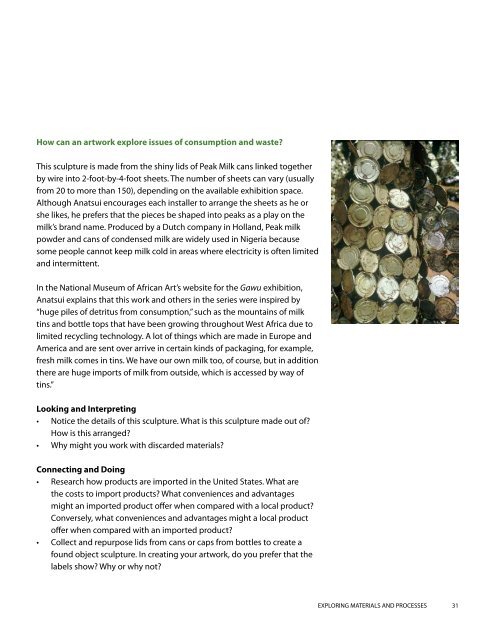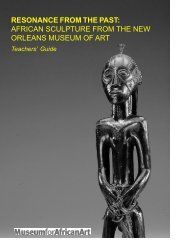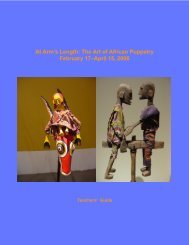El Anatsui
When I Last Wrote to You about Africa - Museum for African Art
When I Last Wrote to You about Africa - Museum for African Art
- No tags were found...
You also want an ePaper? Increase the reach of your titles
YUMPU automatically turns print PDFs into web optimized ePapers that Google loves.
How can an artwork explore issues of consumption and waste?<br />
This sculpture is made from the shiny lids of Peak Milk cans linked together<br />
by wire into 2-foot-by-4-foot sheets. The number of sheets can vary (usually<br />
from 20 to more than 150), depending on the available exhibition space.<br />
Although <strong>Anatsui</strong> encourages each installer to arrange the sheets as he or<br />
she likes, he prefers that the pieces be shaped into peaks as a play on the<br />
milk’s brand name. Produced by a Dutch company in Holland, Peak milk<br />
powder and cans of condensed milk are widely used in Nigeria because<br />
some people cannot keep milk cold in areas where electricity is often limited<br />
and intermittent.<br />
In the National Museum of African Art’s website for the Gawu exhibition,<br />
<strong>Anatsui</strong> explains that this work and others in the series were inspired by<br />
“huge piles of detritus from consumption,” such as the mountains of milk<br />
tins and bottle tops that have been growing throughout West Africa due to<br />
limited recycling technology. A lot of things which are made in Europe and<br />
America and are sent over arrive in certain kinds of packaging, for example,<br />
fresh milk comes in tins. We have our own milk too, of course, but in addition<br />
there are huge imports of milk from outside, which is accessed by way of<br />
tins.”<br />
Looking and Interpreting<br />
• Notice the details of this sculpture. What is this sculpture made out of?<br />
How is this arranged?<br />
• Why might you work with discarded materials?<br />
Connecting and Doing<br />
• Research how products are imported in the United States. What are<br />
the costs to import products? What conveniences and advantages<br />
might an imported product offer when compared with a local product?<br />
Conversely, what conveniences and advantages might a local product<br />
offer when compared with an imported product?<br />
• Collect and repurpose lids from cans or caps from bottles to create a<br />
found object sculpture. In creating your artwork, do you prefer that the<br />
labels show? Why or why not?<br />
EXPLORING MATERIALS AND PROCESSES 31





